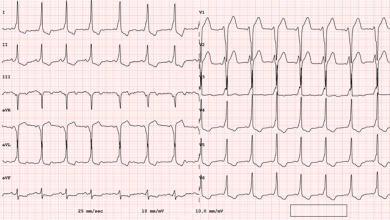Search results
Author(s):
Greg Mellor
,
Elijah R Behr
Added:
3 years ago
Sudden unexplained death syndrome (SUDS)1 is rare in the young but when it occurs it is devastating for family and friends, and affects whole communities. That it can affect fit, athletic individuals and may be related to competitive sports only adds to the sense of incomprehension and injustice felt by wider society. In comparison with the older population, where sudden death is more common and…
View more
Author(s):
Demosthenes G Katritsis
,
Bernard J Gersh
,
A John Camm
Added:
3 years ago
Sudden cardiac death (SCD) is usually defined as death due to cardiac causes occurring within 1 hour of the onset of symptoms. Unexplained sudden death occurring in an individual older than 1 year of age is known as 'sudden unexplained death syndrome'. Unexplained sudden death occurring in an individual younger than 1 year of age is known as 'sudden unexplained death in infancy'. SCD with…
View more
Author(s):
Dietmar Bänsch
Added:
3 years ago
For more than three decades, the implantable cardioverter defibrillator (ICD) has proven to be a well-established, main therapeutic tool for the primary and secondary prevention of sudden cardiac death due to malignant ventricular arrhythmias.1
One of the standard practice concepts is defibrillation (DF) testing. Defibrillation testing has been considered a mandatory part at the time of…
View more
Author(s):
Theofanis George Korovesis
,
Paraskevi Koutrolou-Sotiropoulou
,
Demosthenes G Katritsis
Added:
1 year ago
Author(s):
Moinuddin Choudhury
,
Mark R Boyett
,
Gwilym M Morris
Added:
3 years ago
The sinoatrial or sinus node (SAN) is the heart’s natural pacemaker. Located in the superior right atrium, it automatically produces cyclical electrical activity to initiate each heartbeat in normal sinus rhythm. SAN dysfunction (SND) in humans, also known as ‘sick sinus syndrome’, can manifest as pathological bradycardia and asystolic pauses. As a result, SND can lead to symptoms of reduced…
View more
The Promise of Leadless Pacing
Author(s):
Katrina Mountfort
,
Reinoud Knops
,
Johannes Sperzel
,
et al
Added:
3 years ago
Article
Author(s):
Dipen Shah
Added:
3 years ago
Atrial fibrillation (AF) is the most common sustained cardiac arrhythmia, is associated with increased risk of stroke and heart failure and is a significant global health challenge.1 Pharmacological treatments to restore sinus rhythm in patients with AF are associated with a considerable relapse rate,2,3 whereas nonpharmacological interventions, such as catheter ablation procedures, which isolate…
View more
Author(s):
Rahul K Mukherjee
,
Manav Sohal
,
Nesan Shanmugam
,
et al
Added:
2 years ago
Author(s):
Cristina E Molina
,
Jordi Heijman
,
Dobromir Dobrev
Added:
3 years ago
Optimal cardiac function depends on appropriate rate and force of contraction, with specific cardiac regions having developed particular beat-to-beat properties depending on their individual functions. For example, isovolumetric contraction time is shorter in the right ventricle (RV) than in the left ventricle (LV). At the cellular level, cardiac function is regulated by regional cardiomyocyte…
View more
Author(s):
Pasquale Vergara
,
Savino Altizio
,
Giulio Falasconi
,
et al
Added:
3 years ago













